The Gap (1937)
장르 : 전쟁, 다큐멘터리
상영시간 : 38분
연출 : Donald Carter
시놉시스
A dramatization to promote the Territorial Army.

Allied prisoners tunnel out of a stalag, then return to avenge fellow escapees executed by the Nazis.

The incredible story of Bruno Lüdke (1908-44), the alleged worst mass murderer in German criminal history; or actually, a story of forged files and fake news that takes place during the darkest years of the Third Reich, when the principles of criminal justice, subjected to the yoke of a totalitarian system that is beginning to collapse, mean absolutely nothing.

2차 세계대전 당시 독일군에 대항해 노르웨이 독립저항군 소속 파괴공작원으로 활동한 막스 마누스의 일대기를 담은 작품.

2차 세계대전, 가족을 모두 잃은 ‘투비아’(다니엘 크레이그 분)는 독일군과 밀고자를 죽인 후 형제들을 이끌고 숲으로 몸을 숨긴다. 그리고 죽음을 피해 숲으로 도망 온 피난민들을 외면하지 못한 ‘투비아’는 은신처가 발각될 것을 걱정하는 동생 ‘주스’(리브 슈라이버 분)의 반대를 무릅쓰고 그들을 받아들인다. 독일군에 맞서 유태인들을 보호하는 ‘투비아’의 명성은 피난민들의 유일한 희망이 되고 숲으로 몰려드는 사람들의 수는 수 천명에 이르게 된다. 하루, 한달… 혹은 일년을 더 살기 위한 200일간의 뜨거운 저항! 한편 '주스'는 적에게 전면전으로 대항하겠다며 은신처를 떠나 러시아군에 합류하고 '투비아'와 막내 '아사엘'(제이미 벨 분)은 혹독한 겨울과 독일군의 습격 속에서 남자들을 훈련시키고 노인과 여자, 아이들을 지켜나간다. 살육과 절망의 비참함 속에서 단 하루라도 인간답게 살기 위해 결혼을 하고, 학교를 열고, 가난한 축제를 여는 사람들. ‘투비아’ 역시 아름다운 여인 ‘릴카’(알렉사 다바로스 분)와 사랑에 빠진다. 하지만, ‘투비아’의 은신처를 초토화하려는 독일군의 대공습과 추격전이 시작된다. 사랑하는 여인과 수천 명의 생명을 지키기 위해 국경을 넘어야 하는 ‘투비아’와 형제들의 마지막 사투가 다가오는데…

나카오카 겐의 아버지는 제국주의와 전쟁을 반대하여[3][4] 마을 사람들에게 '비국민' 이라는 야유를 받으면서 살았다거나 일제 치하 조선인들의 문제[5], 패전 이후의 막장이 된 일본이나 여기에 제대로 대처하지 못하는 정부와 미군의 횡포[6] 등 여러 국면에서 당대 일본의 상황과 문제들을 철저하게 다루고 있는 작품
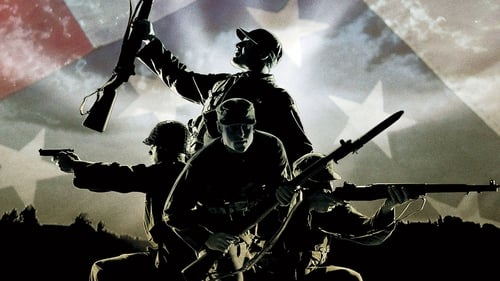
1945년 1월 필리핀에 도착한 헨리 뮤시 중령은 일본군 후방 50여 킬로 미터에 위치한 "카바나투안" 포로 수용소에 수용된 500명의 미군 포로들을 긴급하게 구출하라는 작전 명령을 받는다. 그러나 미군의 진격과 동시에 일본군에 붙잡혀 있는 미군 포로들이 언제 학살될지 모르는 급박한 상황에서 살상가상으로 구출 작전을 수행할 병사들은 지금까지 한번도 실전 경험이 없는 사병들이 대다수인 제 6 레이져 부대원들로 결정된다. 이번 작전의 책임자 뮤시 중령은 이러한 난관에도 불구하고 부대원 중에서 전투에 적합한 병사 120명을 차출해 훈련을 시키고, 필리핀 유격대의 지원을 받아서 포로 구출 작전을 본격적으로 사기하게 되는데...
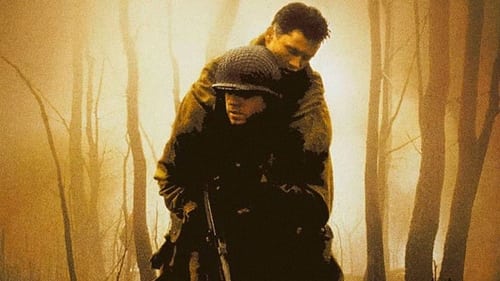
In WWII Western Germany, Private David Manning reluctantly leaves behind a mortally wounded fellow soldier and searches for survivors from his platoon, only to learn from commanding officer Captain Pritchett that they have all been killed in action. Despite requesting a discharge on the grounds of mental disability, Manning is promoted to sergeant and assigned to lead a new platoon of young inductees.

Aleksandar Zograf, a renowned cartoonist discovers an unusual comic book from World War II. The comic’s hero is Kaktus Kid – a small cactus trapped in his pot. Intrigued, Zograf investigates into the life of Kaktus Kid’s creator – little known artist Veljko Kockar. He soon discovers that Kockar was arrested just after the liberation of Belgrade in 1944. He was charged for being a Gestapo agent and executed. Zograf’s investigation reveals a far more complex story: Kockar’s identity and artistic works were stolen, he possibly has an affair with the girlfriend of a guerilla soldier and he drew anti-communist propaganda for the Nazis. As he explores the story and pieces together the scraps of evidence 70 years after it happened Zograf is faced with his own personal and artistic dilemmas: why do these little drawings have such power to give consolation but also lead to violence?
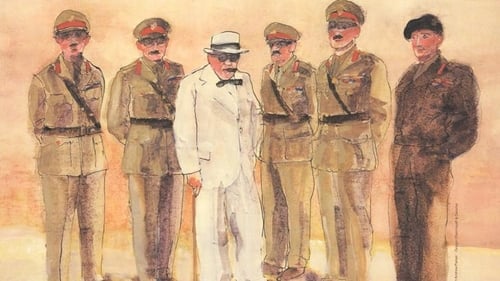
The complicated relationship between Winston Churchill and the leaders of the British army during World War II.

영국 폭격단은 공습작전으로 많은 사상자를 낸다. 전투기 파일럿 밀러 대위는 비밀 폭격단으로 배치되고 대원들의 나태한 군기 때문에 사사건건 충돌한다. 드디어 베를린 공습 작전이 떨어지고 출 격하지만 독일군의 저항으로 대규모 공중전이 벌어지는데… 진정한 전쟁 영웅을 만난다!

The Viking Invasion of Wessex 878 AD is the second DVD in this sensational new series, The Dark Ages, which delves into a war-torn and obscure period of Britain's past to focus on some of the pivotal events that completely altered the history, culture and politics of the British Isles. In the year 878 AD, Alfred King of Wessex faced the fourth and most serious attempt by the devious Viking chieftain Guthrum to seize the last remaining Saxon kingdom. Thwarted in their conventional attempts in 871, 876 and 878, the Vikings, stole away from their base in Gloucester and descended on Alfred's court while they were celebrating Twelfth Night on the borders of wintery Wessex at Chippenham. Alfred escaped but was driven into hiding in the Somerset Marshes, while the Vikings fanned across Wessex.

The film begins with the First World War and ends in 1945. Without exception, recordings from this period were used, which came from weekly news reports from different countries. Previously unpublished scenes about the private life of Adolf Hitler and Eva Braun were also shown for the first time. The film was originally built into a frame story. The Off Commentary begins with the words: "This film [...] is a document of delusion that on the way to power tore an entire people and a whole world into disaster. This film portrays the suffering of a generation that only ended five to twelve. " The film premiered in Cologne on November 20, 1953, but was immediately banned by Federal Interior Minister Gerhard Schröder in agreement with the interior ministers of the federal states of the Federal Republic of Germany.


After the events of The African Queen (1951), Charlie and Rose are recaptured by the Germans and forced to tug one of their big cannons that could bring the Nazis victory against the local Allied forces.

2차대전 중 독일장교로부터 적 점령지역의 은행에 대량의 금궤가 있다는 정보를 얻게 된 켈리는 단 3일간의 휴가기간 중에 동료들을 설득하여 상부에 보고하지도 않은 채 적군의 점령지역을 공격한다. 이들은 오직 금궤를 강탈하기 위하여 적의 방어선을 뚫고 마침내 은행으로 돌진한다.

제2차 세계대전 당시 미국은 일본과의 전투를 승리로 이끌어내기 위해 새로운 암호 체계를 만들어낸다. 미군이 선택한 것은 나바호 인디언의 복잡한 언어였고 나비호족의 도움으로 미군은 결국 누구도 해독할 수 없는 암호체계를 완성하는 데 성공한다. 미군의 교육을 받은 나비호 족은 사이판 전쟁에 투입되고 조 엔더스(니콜라스 케이지 분)는 나비호 족을 보호함과 동시에 비상사태시 그들을 죽여서라도 암호를 지켜야하는 임무를 부여 받는다.
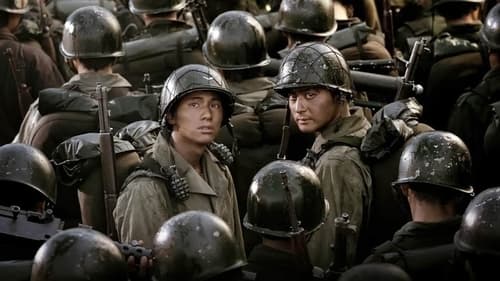
1950년 6월. 서울 종로에서 가족의 생계를 책임지기 위해 열심히 살아가는 진태는 힘든 생활 속에도 약혼녀 영신과의 결혼과, 세상에서 가장 소중하게 생각하는 동생 진석의 대학진학을 위해 언제나 활기차고 밝은 생활을 해 나간다. 6월의 어느 날, 한반도에 전쟁이 일어났다는 호외가 배포되면서 평화롭기만 하던 서울은 순식간에 싸이렌 소리와 폭발음, 그리고 사람들의 비명 소리로 가득해진다. 이에 남쪽으로 피난을 결정한 진태는 영신과 가족들을 데리고 수많은 피난행렬에 동참하지만, 피난열차를 타기 위해 도착한 대구역사에서 거대한 운명의 소용돌이에 말려들고 만다.
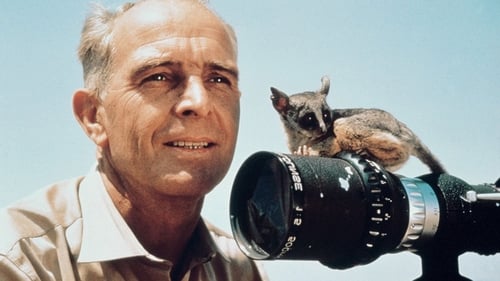
The film tells of the beginnings of the Serengeti National Park in Tanzania. At the end of the 1950s, the Tanzanian National Park Administration wanted to fence in the protected area around the Ngorongoro Crater. Bernhard and Michael Grzimek were invited by the national park administration in 1957 to get a precise picture of the animal migrations and to provide the national park administration with the values they needed for their project. Using a new counting method with two airplanes, the Grzimeks found out that the migration of the herds was different than assumed.















